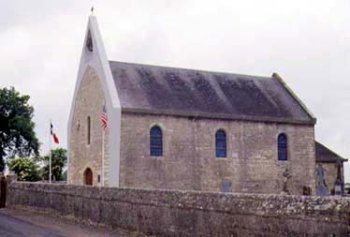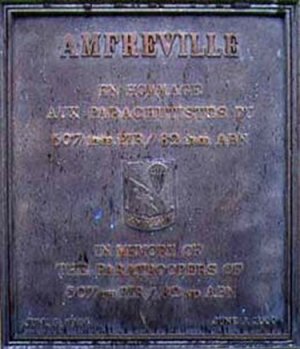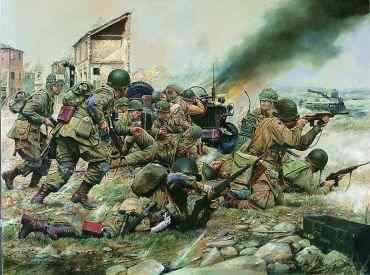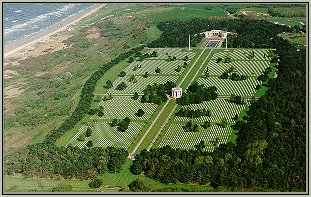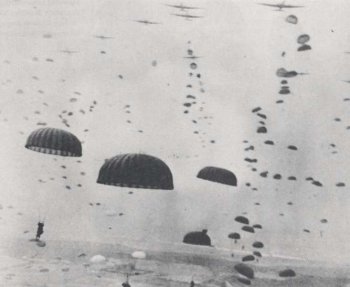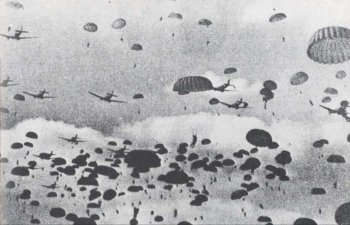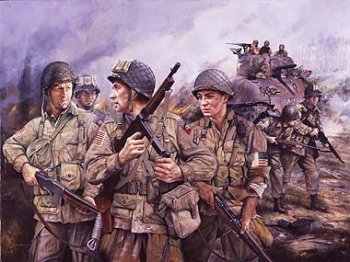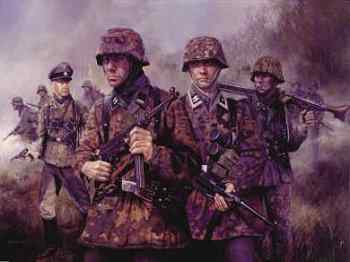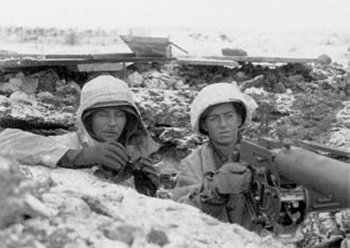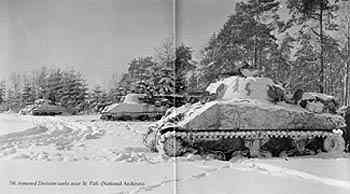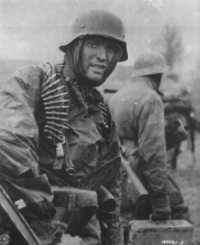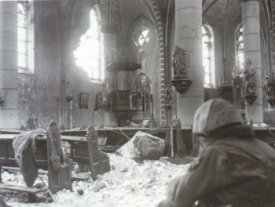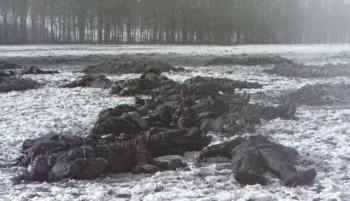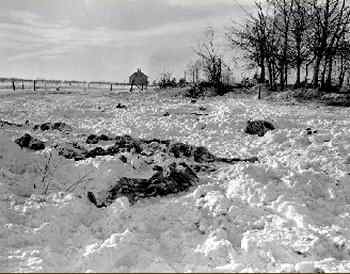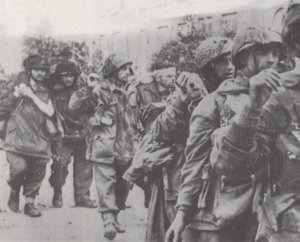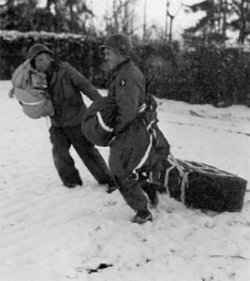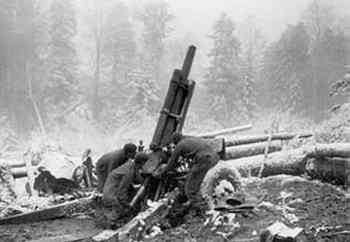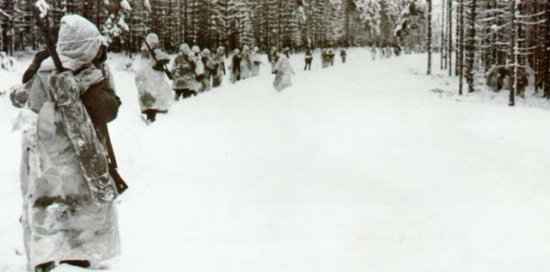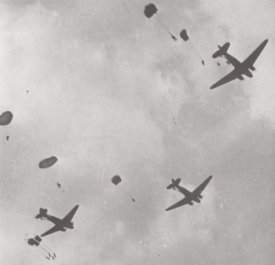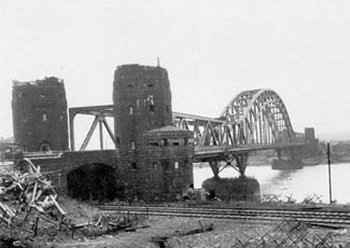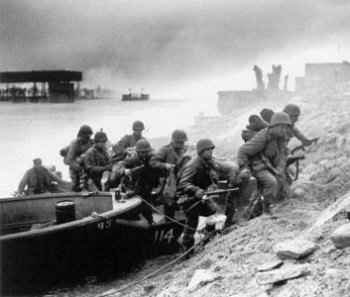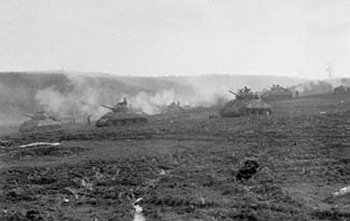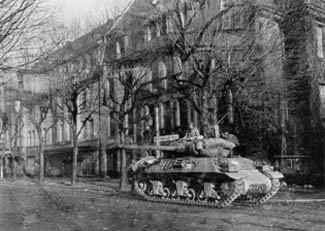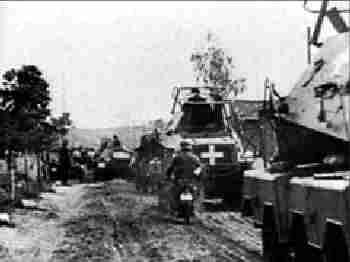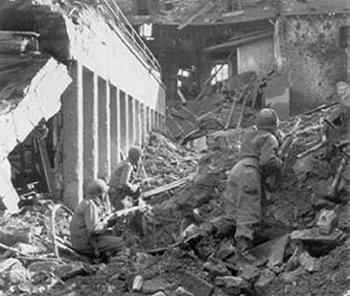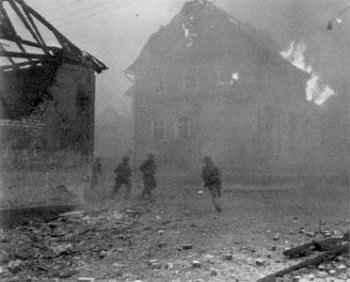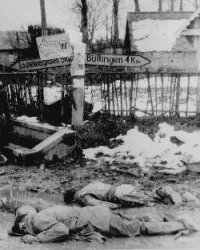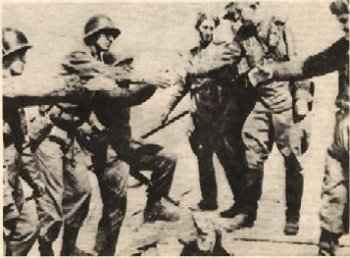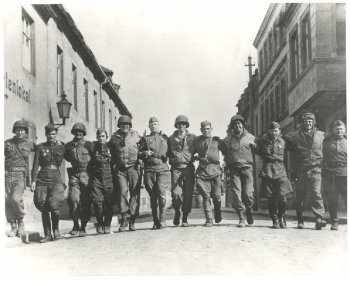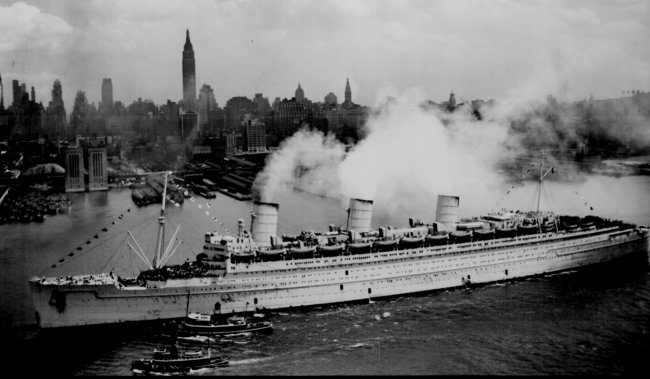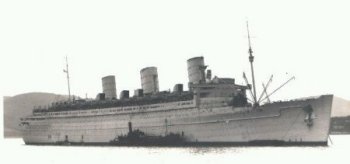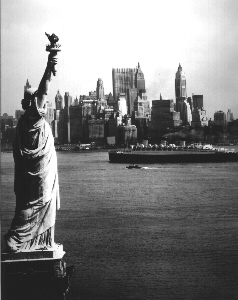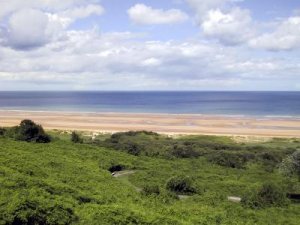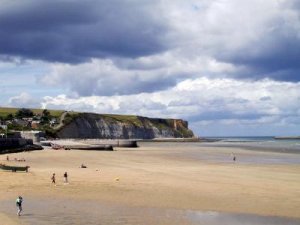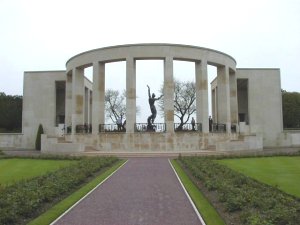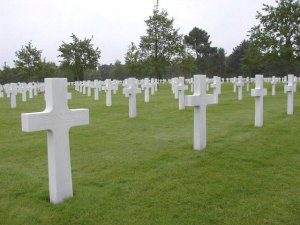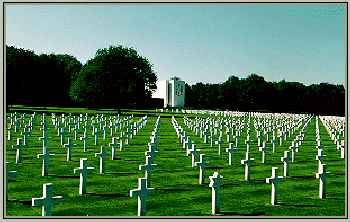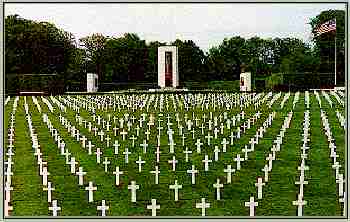|
South of the creamery and on three sides of the bridge, there were
obstacles, flooded areas. For practical purposes, the only approach to
the bridge was the one we had chosen through Chef-du-Pont. The
approaches from the west were causeways, long and straight and
completely flooded on both sides. Germans were dug in on the shoulders
on both sides of the road occupying foxholes dispersed at intervals of
about ten yards for a long stretch leading to the bridge and beyond. No
one could hope to attack successfully or withdraw along these causeways
without a preponderance of supporting fires. Something we did not have.
Nevertheless, we were on the outskirts of Chef-du-Pont with 175 men.
What are we waiting for? Let’s take the bridge. Two attempts to storm
the bridge proved unsuccessful. There had to be a better way. We did
succeed in clearing the eastern side of the bridge, however, by over
running the positions along the shoulders of the road.
Our own position
along the edge of the road east of the bridge had become almost
untenable because rifle and direct artillery fire coming from our right
flank. Just as it was beginning to look as though we might have a
stalemate, Col. Maloney was called back to La Fiere with all men
available, leaving only about 34 men at Chef-du-Pont. Concurrent with
his departure three things happened:
One, direct
artillery fire on our positions around the creamery reduced our strength
to 20 men; two, an observation point in the creamery noted what was
estimated to be a company of Germans movin around to our left rear. This
threat never materialized for they by-passed us in route to Ste. Mere
Eglise where, though not known to us at the time, a battle was being
waged by elements of the 505th for that important objective;
three, an officer delivered a message from Gen. Gavin, "hold at all
costs." It was pretty obvious that it couldn’t cost much more,
but at the same time, it was doubtful we could hold something we
didn’t have. Reinforcements were requested, and as from heaven, C-47s
began to appear, dropping bundles of weapons and ammunition. One bundle
of 60mm mortar ammunition dropped right in our laps. Within 30 minutes,
the officer who had previously delivered the "hold at all
costs" message returned with 100 men and a 57mm gun which was
pulled into position on our side of the bridge. We started firing at the
enemy field piece. I’m sure we didn’t hit it, but we stopped the
firing and that is what we had to do in order to survive.
At the beginning
of this period of heavy shelling, I found myself exposed with no place
to go. I spotted a very small brick sentry house just short of the
bridge on our side. I made a dash for it and went inside and found a
still burning enemy soldier, victim of a white phosphorous grenade,
which apparently had been tossed in on him during earlier fighting. The
house only had room for one man standing. So it became crowded with my
arrival and the other guy in there wasn’t going anywhere. This coupled
with the fact that the smoke and stench from the burning man caused me
to make a quick decision that I would rather take my chances out in the
open than risk the consequences of smoke inhalation and besides I
reasoned that this lone house was surely an aiming point for the
artillery. With our reinforcements, strong positions were organized to
our rear and along the flooded area on either side of the road and east
of the bridge. The defenses were tied in with natural obstacles on three
sides of us. We opened fire with every weapon we could get into
position, including our 60mm mortar. On a prearranged signal, all fires
lifted and ten men and one officer stormed the bridge and went into
position on the western approach to guard the causeway. Five Germans
made a run for it down the deathtrap causeway and were immediately shot
down. That did it. The battle was over. The bridge was ours and we knew
we could hold it. Bust as with all victories in war, we shared a let
down feeling. We knew it was still a long way to Berlin. We began to
organize and improve our position and tended to such pressing things as
first aid to wounded, 25 in number who could not be evacuated because of
a lack of any place to evacuate them. We gathered the bodies of the
dead, Americans and Germans, and covered them with parachutes. D-DAY was
almost over and it had gone fast and in a little while, it would be D+1.
When would the beach forces come? They should have already done so.
Maybe the whole invasion had failed. After all, we knew nothing of the
situation except as it existed in Chef-du-Pont and Chef-du-Pont is a
very small town.
At 2400 hours,
our fears were dispelled. Reconnaissance elements of the 4th
Infantry Division wheeled into our creamery yard complete with a few
rations that they shared with us. As we dug in, and made ourselves
comfortable for a turn at short naps, the smell of death, which was to
be with us for a long time to come, had begun to permeate the night air.
It was D+1 in Normandy. As I sat pondering the day’s events, having
been in command subsequent to Col. Ostberg’s injury, I reflected upon
the details of the fighting and the bravery of every man participating
in it. Some had lost their lives, some others had been seriously wounded
and lay inside the creamery, perhaps wondering if they would ever be
evacuated. We had done some things badly, but overall with a hodgepodge
of troops from several units who had never trained together as a unit,
didn’t even know one another, and were engaged in their first combat,
we had done okay. We captured our bridge and held it.* We knew we faced
D+1 with confidence and anticipation. Sources:
This
account was written by Roy Creek shortly after WWII |
